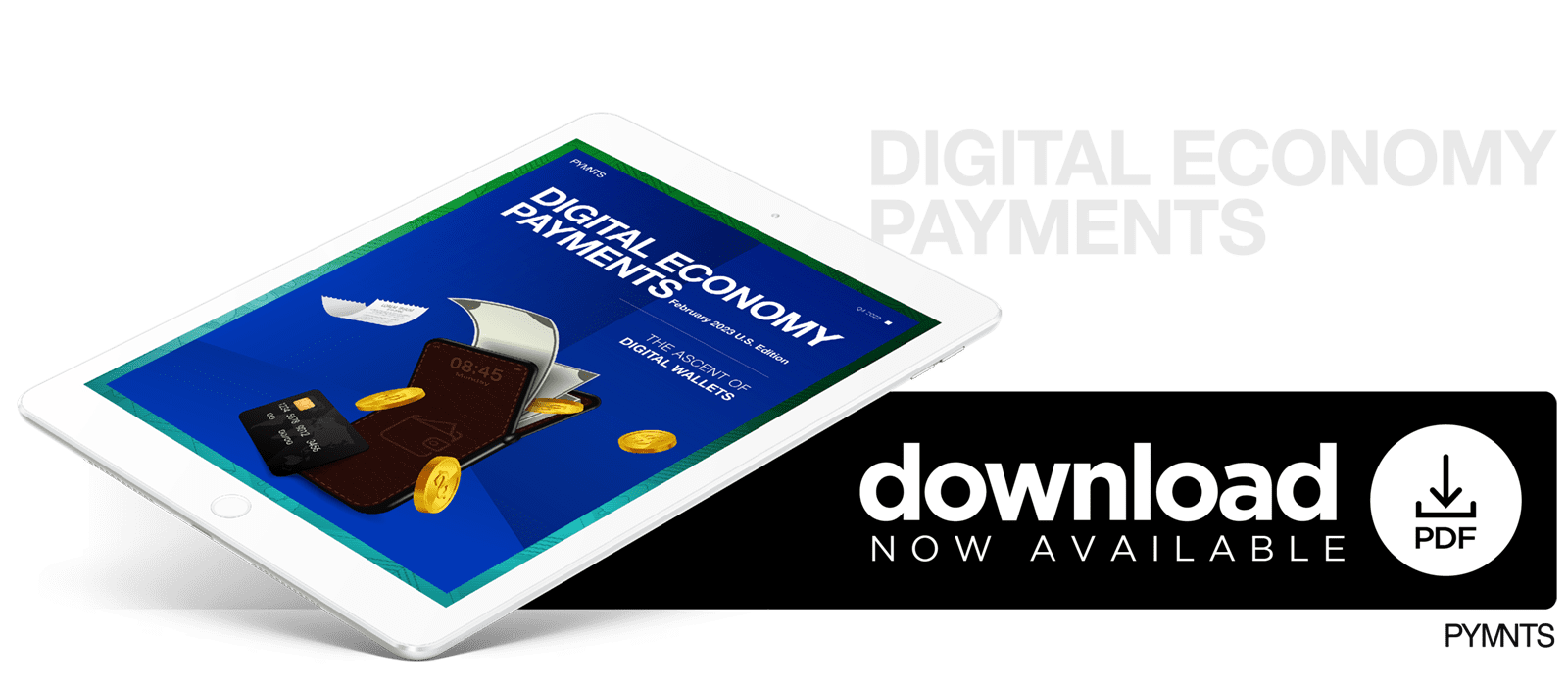Digital Wallets Used More by High Earners, BNPL More by Middle Class
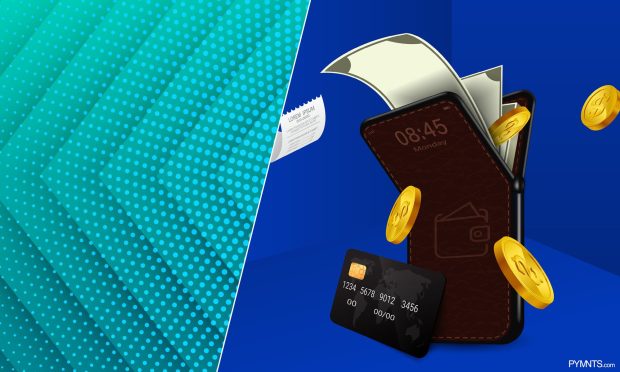
As the economy’s digital shift continues, eCommerce growth in Q4 2022 stands above pre-pandemic projections for this period and is on its way to returning to pre-pandemic levels. Consumers’ widespread demand for digital payments has contributed to much of this growth, with the availability of alternative options, such as digital wallets and buy now, pay later (BNPL), becoming increasingly important — particularly for online shoppers.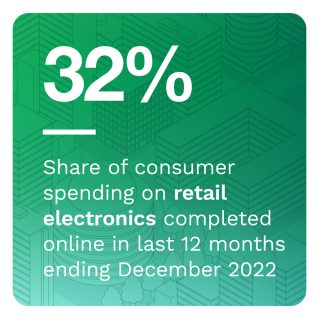
Total consumer spending on retail products was more than $6 trillion in the 12 months before October 2022, with eCommerce representing $1.3 trillion in annual sales. Based on PYMNTS’ Quarterly Payments Survey and Bureau of Economic Analysis (BEA) data, this means that eCommerce represents 21.7% of annual retail sales in Q4 2022, up from 21.3% in Q3. At the same time, the U.S. Census tabulation of merchant sales volume reports that eCommerce holds just a 14.8% share of all U.S. retail sales, 1 percentage point more than pre-pandemic predictions. Both studies show that eCommerce activity has become critical to growing sales, even as in-store sales still dominate the retail market.
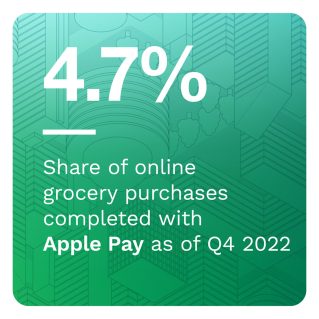 “Digital Economy Payments: The Ascent of Digital Wallets” reviews new data on consumers’ purchasing and payment preferences during the past quarter. From Dec. 9, 2022, to Dec. 14, 2022, we surveyed 2,748 United States consumers about their shopping habits, the products they buy in-store and online and the payment methods they use.
“Digital Economy Payments: The Ascent of Digital Wallets” reviews new data on consumers’ purchasing and payment preferences during the past quarter. From Dec. 9, 2022, to Dec. 14, 2022, we surveyed 2,748 United States consumers about their shopping habits, the products they buy in-store and online and the payment methods they use.
U.S. consumers spent $182 billion buying groceries online in Q4. PYMNTS’ Quarterly Payments Survey data finds that 12% of all retail spending on groceries was made through online channels in 2022, while eCommerce represented 25% of non-grocery retail purchases. In dollars, this amounts to $182 billion in consumer purchases for groceries and $1.1 trillion for other retail products. Although the grocery category ranks highest in total retail sales, grocery’s share has decreased slightly from Q3 2022.
Digital wallets are cannibalizing the use of debit cards online across all retail categories, even though consumers continue to use debit cards for everyday purchases such as groceries. We found that although 38% of consumers used debit cards for their last in-store purchase, just 23% used them online. Digital wallets explain this gap, as PayPal, Google Pay, Apple Pay and BNPL’s share of online spending is much higher than their share of in-store spending. PayPal represents just 2.7% of in-store transactions but 13.5% online as of the close of Q4 2022. 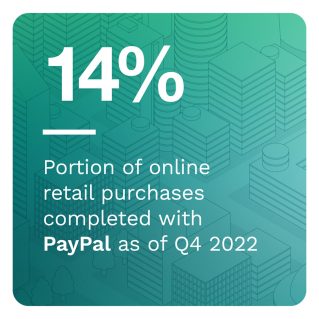 Apple Pay reached 4.3% of the total amount spent on online purchases, and Google Pay took 2.4%. Debit cards still dominate for everyday essentials such as groceries: Consumers used debit cards to pay for 44% of in-store grocery retail sales and 40% of online grocery sales in the last 12 months.
Apple Pay reached 4.3% of the total amount spent on online purchases, and Google Pay took 2.4%. Debit cards still dominate for everyday essentials such as groceries: Consumers used debit cards to pay for 44% of in-store grocery retail sales and 40% of online grocery sales in the last 12 months.
Higher-income consumers favor digital wallets, while BNPL is popular among middle-income consumers for all retail purchases. Debit cards and cash represent more than half of the total amount spent by low-income consumers for all retail purchases. Middle- and high-income consumers are heavy credit card users, paying more than one-third of their retail expenses with this payment method. In the 12 months before December 2022, high-income consumers also paid with nontraditional payment methods more often, with PayPal making up 8.5% of all their retail purchases, followed by Apple Pay (3.5%) and Google Pay (2.1%). BNPL is more popular among middle-income consumers, who paid for 1.5% of all their retail purchases this way.
To learn more about how digital wallets continue to drive growth in eCommerce retail sales, download the report.
